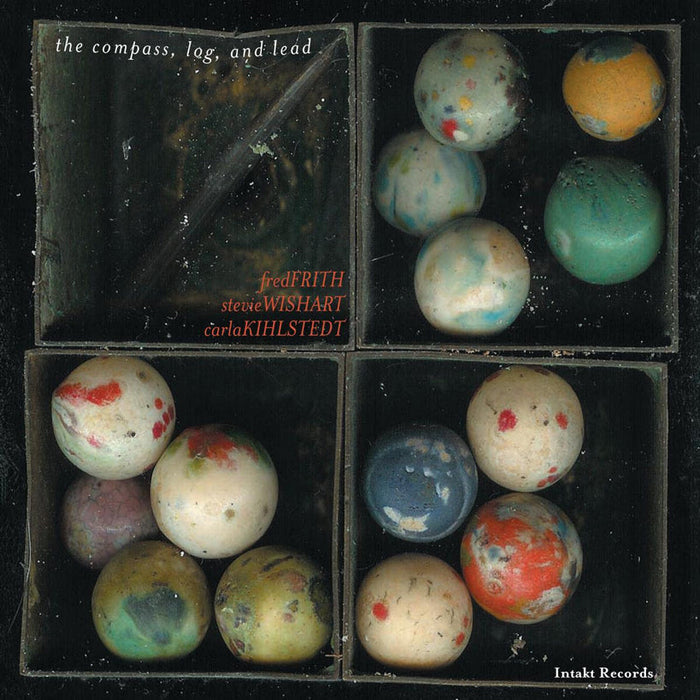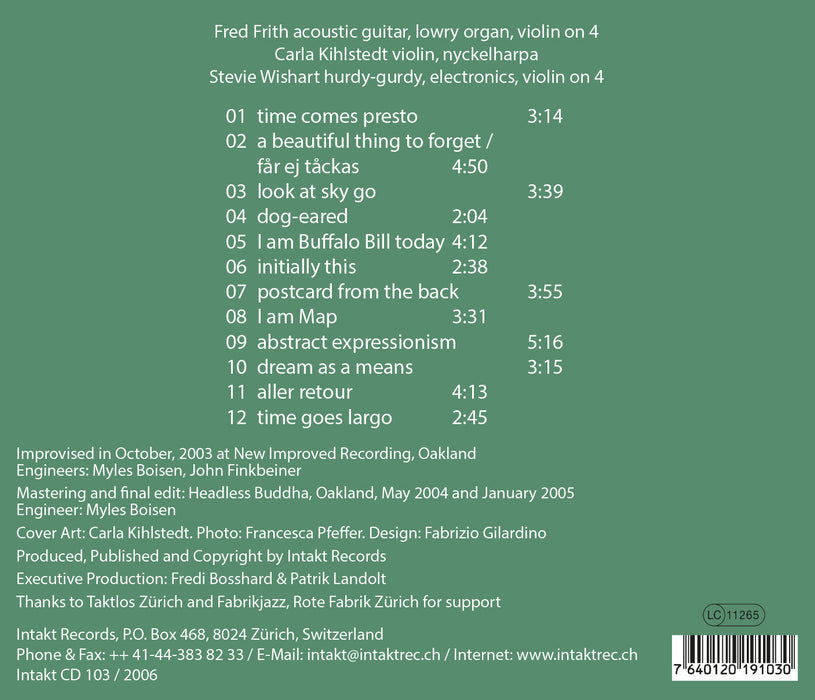
103: FRED FRITH – CARLA KIHLSTEDT – STEVIE WISHART. The Compass, Log and Lead
Intakt Recording #103/ 2006
Recorded in October, 2003 at New Improvised Recording, Oakland.
Original price
CHF 12.00
-
Original price
CHF 30.00
Original price
CHF 30.00
CHF 12.00
-
CHF 30.00
Current price
CHF 30.00
More Info
Album Credits


